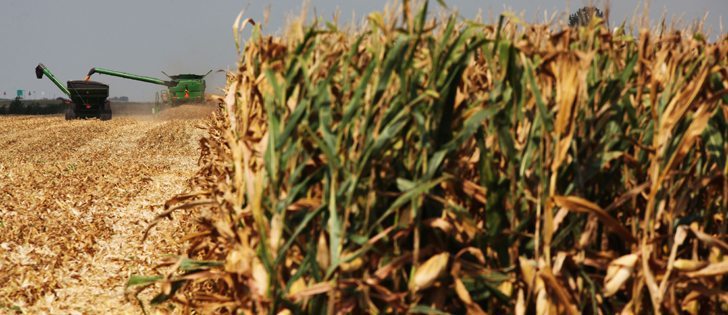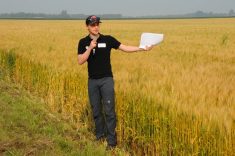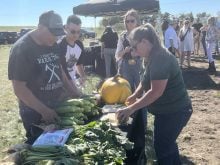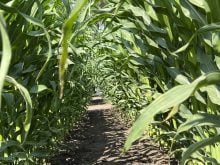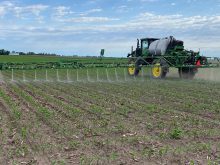A yield increase of 10 percent is a big deal for any crop, and a 25 percent jump is massive.
So when research suggests it’s possible to improve yields by 50 percent, it’s a global news story.
Plant scientists at Cold Spring Harbor Laboratory in New York have discovered a way to control stem cells in corn, causing the stem cells to grow for a longer period of time.
The trait hasn’t been tested in commercial corn varieties, but the stem cell discovery may provide a dramatic boost to crop yields.
Read Also
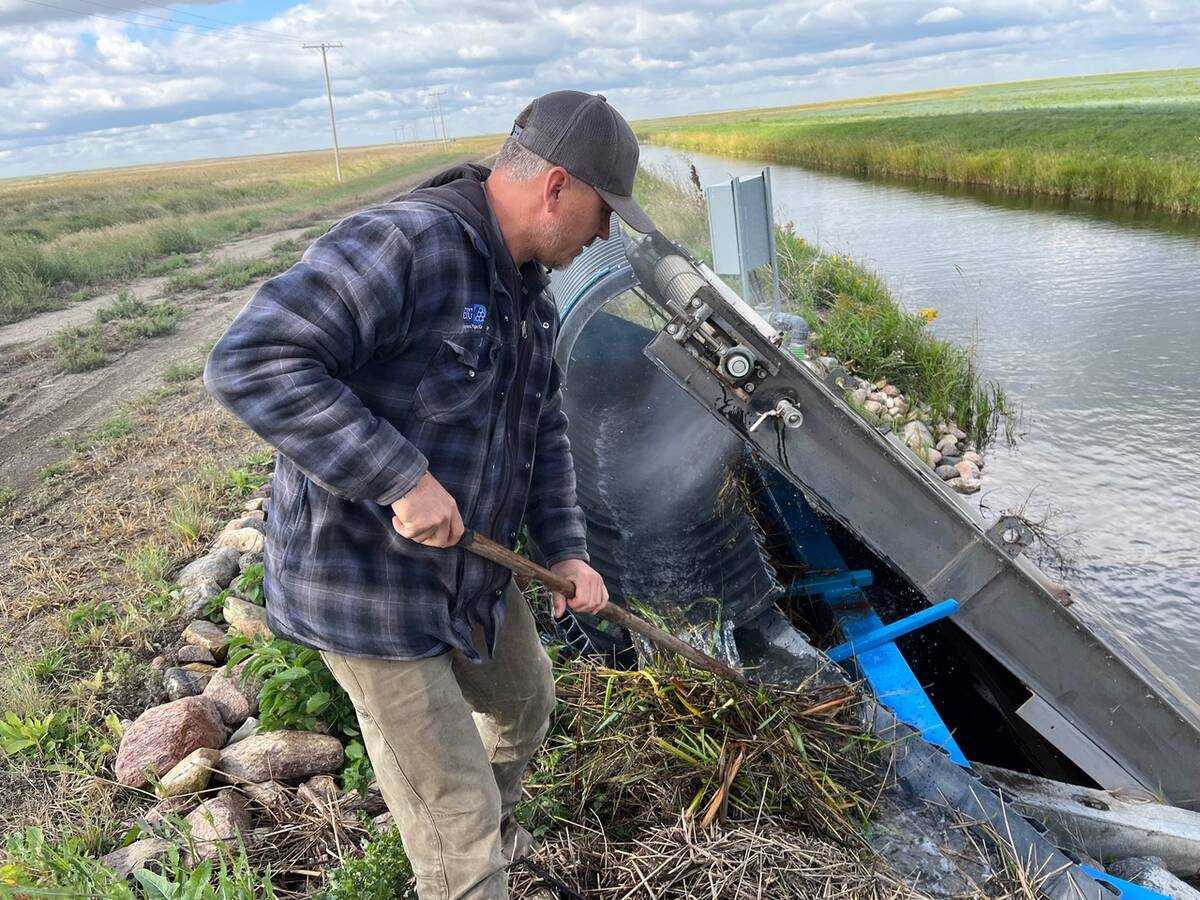
Saskatchewan farmer uses tile drainage to manage water
The integration of both irrigation and tile drainage results in higher yields, water efficiency, improved soils and less nutrient runoff, says one producer.
“Scientists have figured out a way to gently up-regulate stem cell growth so that maize produces optimally more stem cells, increasing the plant’s yield by up to 50 percent,” said Peter Tarr, a science writer with the lab.
“Since this new stem cell growth pathway is conserved across plants … tweaking it may provide a means to significantly boost yield in a wide range of staple food crops.”
A global consortium of biologists, including David Jackson, a Cold Spring Harbor scientist who led the research, discovered genetic software that regulates the growth of plant stem cells.
Their findings have been published online in Nature Genetics.
The scientists also learned it’s possible to “up regulate” the genes and gene expression that are in charge of stem cell development in corn. In other words, they learned how to modify the plant’s growth.
“The stem cells make all the other cells in the body, or in plants … (but) at some point the stem cells just stop and growth terminates,” Jackson said.
“(However), if you (can) control how the stem cells function, then you can make things grow for a longer time and get bigger.”
Plant scientists have long known about a biological pathway, called WUSCHEL, which controls gene expression and regulates the growth of stem cells.
In an earlier experiment, Jackson and his team attempted to use that pathway to inflate stem cell growth and increase corn yield, but it didn’t pan out as planned.
“What we found in that work, three years ago, is we could make more seeds in corn, but we didn’t actually increase the yield,” he said.
“The plant realized we were trying to fool it and it made the seeds smaller.”
The scientists tried again after discovering the new biological pathway for stem cell regulation, this time with more success.
“What’s really significant about this new (research) is we made more seeds and maintained the size,” he said.
“Obviously then, we do have increase in overall yield.”
Jackson and a team of researchers that includes scientists with DuPont Pioneer conducted the research on corn, but they found that the same stem cell system exists in arabidopsis, a model plant used frequently in biology.
“That’s important because that means it’s probably in every plant,” Jackson said.
DuPont Pioneer scientists will now test the biological tweak to see if it the stem cell stimulation method, or trait, works in commercial corn varieties.
“That process takes quite some time because they usually have to do four or five back-crosses,” Jackson said.
“That (alone) can take two or three years.”
Contact robert.arnason@producer.com




